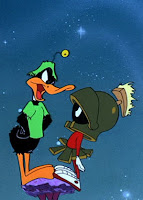Midwinter-blogging,
essay 7 of 12 blog entries on
“In the Bleak
Midwinter,” a poem by Christina Rossetti
Give My Heart
Here’s the fifth and final stanza of Christina Rossetti’s
“In the Bleak Midwinter.”
What can I give Him,
Poor as I am?
If I were a shepherd
I would bring a lamb,
If I were a wise man
I would do my part,
Yet what I can I give Him,
Give my heart.
“In the
Bleak Midwinter,” fifth stanza
Christina
Rossetti
Each of the poem’s five stanzas has eight lines. The
second and fourth lines rhyme, as do the sixth and eighth. In most cases,
each of the first seven lines receives three stresses; a few lines depart
from this structure and have four. The meter is largely driven by
trochee—the poetry term for a stressed syllable followed by an unstressed
syllable. (The trochee is the reverse of the iamb favored by
Shakespeare.)
I find it hard to read the poem without falling into the
rhythms of the popular music setting. But it’s good to remember that
these rhythms are not necessarily Rossetti’s. I think the last stanza
nicely demonstrates how the popular Gustav Holst melody alters the way we hear
the poem’s original built-in music.
 |
| Stained glass from L'eglise Notre-Dame de l'Assomption, Eymet, Dordogne, France. |
This isn’t to say there’s anything wrong with the music
setting. The melody is beautiful and the new stresses do no damage to
the poem’s meaning. The only difficulty is in attempting to recover a
reading of the line the way Rossetti wrote it—with the stress on the word “I.”
There’s a good reason for the stress to fall on the word
“I.” This concluding stanza takes off in a new direction from the four
that precede it. It collapses the centuries, placing the author on the
holy ground of the nativity, forcing her to confront the question: How
should I respond? It’s a personal question that requires introspection.
When Rossetti writes in the first person in her poems, she
frequently deploys a fictional narrator—the “I” is not necessarily
Rossetti. With “In the Bleak Midwinter,” you can’t tell if this is meant
to be the case. The “I” might be Rossetti or might not be.
Personally, I like to think that this really is Rossetti speaking in the first
person: that the question is, “What shall I, Christina Rossetti, give the
Christ child?”
The shepherd can give a lamb. The wise man will give
something appropriate (perhaps myrrh, frankincense, or gold if we associate
wise man with magi). Notice how both of Rossetti’s examples are
men. Now we turn to Christina Rossetti. Growing up middle class in
Victorian England, professions were largely closed off to her.
Educational opportunities were limited. She had little money of her
own. She literally had very little to give, except for the volunteer time
that she gave to serving the Anglican church and its missions and, of course,
her poetry.
The line “Give my heart” closes the poem, even as it
completes her gift of poetry to the child.
 |
| "Virgin and Angels Adoring the Christ Child," glazed earthenware, circa 1460s-70s, by Luca Della Robbia (1400-1482). Frame attributed to Andrea Della Robbia (1435-1525). From the collection at the Philadelphia Museum of Art. |
The Music Room
James Taylor sings “In the Bleak Midwinter”…
Reference Sources
Poems of Christina
Rossetti, edited by William M. Rossetti
Selected Poems of Christina
Rossetti, edited by Marya Zaturenska
Christina Rossetti: A
Writer’s Life by Jan Marsh
The Achievement of
Christina Rossetti, edited by David A. Kent
Christina Rossetti
(Bloom’s Major Poets), edited by Harold Bloom
Christina Rossetti’s
Faithful Imagination by Dinah Roe
Christina Rossetti:
Faith, Gender and Time by Diane D’Amico
Genius by Harold
Bloom
The Man Who Invented
Christmas by Les Standiford
The Pre-Raphaelites
by Andrea Rose
Victorian Painting
by Christopher Wood
... and an occasional sneak glance at Wikipedia entries (but
always double-checking everything!)
© 2011 Lee Price
© 2011 Lee Price










































